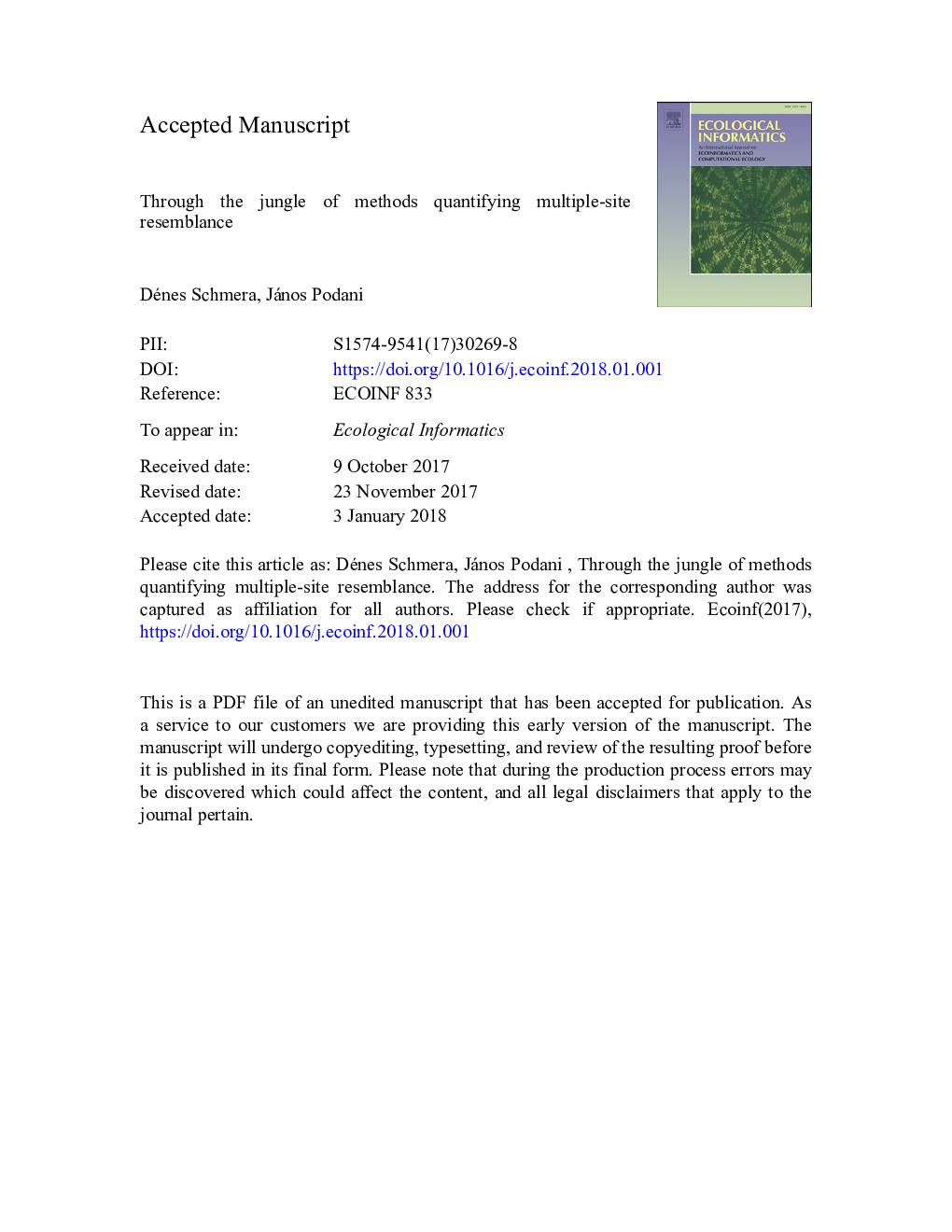| Article ID | Journal | Published Year | Pages | File Type |
|---|---|---|---|---|
| 8845832 | Ecological Informatics | 2018 | 27 Pages |
Abstract
Methods that quantify multiple-site resemblance are basic toolkits of ecology for studying community variation in space and time. Although both pairwise and multiple-site coefficients have received increasing attention in the past decade, the high variety of methodologies combined with the absence of a systematic review prevents full understanding and comprehension. To illuminate the situation, we compare and classify methods that use incidence data and propose a unified terminology. The methods can be grouped according to families, approaches and forms. The examination of algebraic expressions and analyses of artificial and actual data sets suggest that inference drawn about communities strongly depends on the methodology applied. We found that the impact of mimicking the original pairwise indices (i.e. the impact of families) was stronger than the impact of components used in formulating the coefficients (i.e. the impact of approach). Our findings suggest that the measures examined quantify drastically different facets of multiple-site resemblance and therefore they have to be selected with care in community studies.
Keywords
Related Topics
Life Sciences
Agricultural and Biological Sciences
Ecology, Evolution, Behavior and Systematics
Authors
Dénes Schmera, János Podani,
